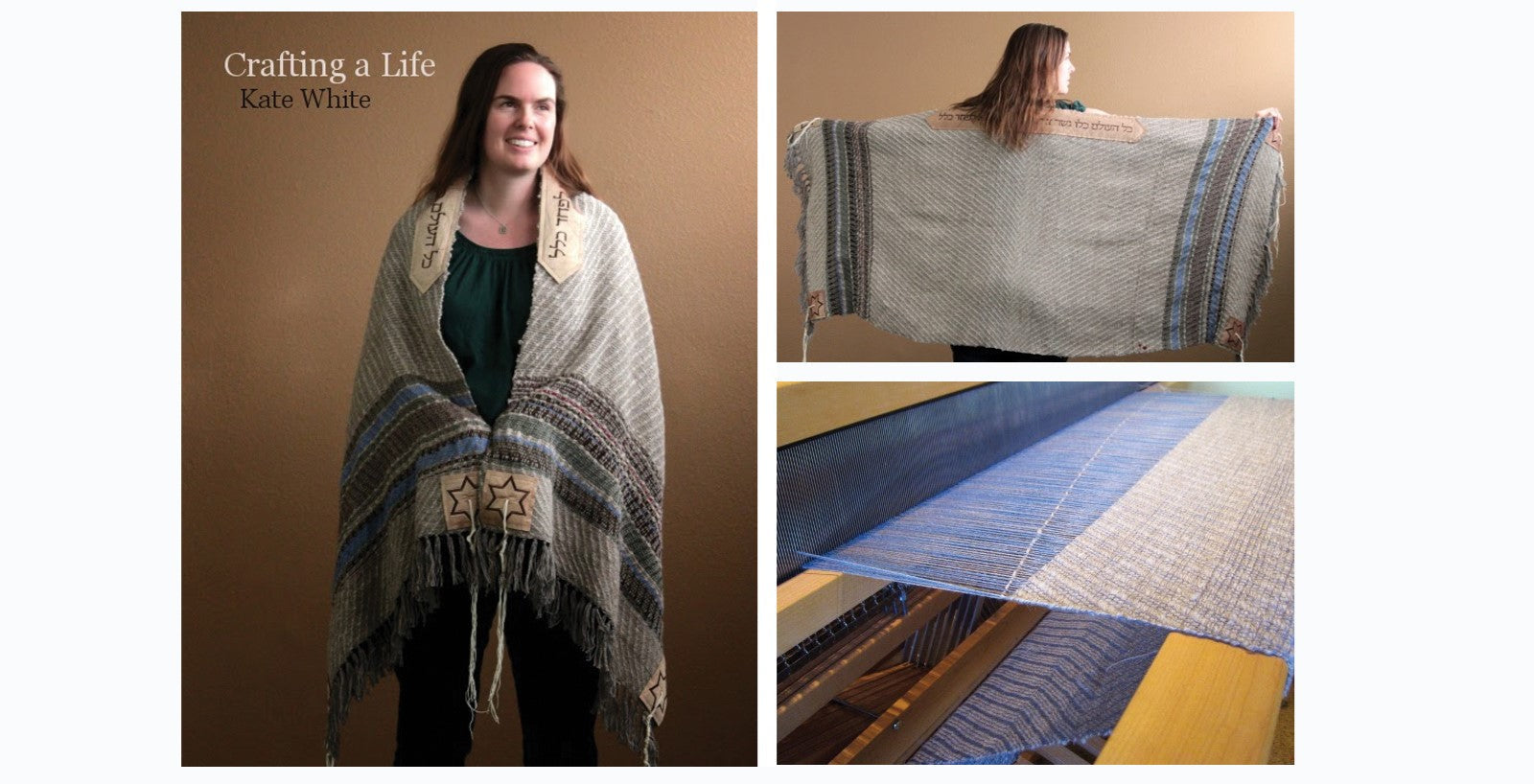By Kate White
When we weave and spin, we create something new. From nature, we gather that which appears to be formless and apply the uniquely human work of our hearts, hands, and minds. We spin countless individual fibers together into a yarn that is strong. We then cross that yarn with another one, over and under, to make the cloth. The child of this marriage is strong, beautiful, and imperfect. There is wonder in these ancient crafts.

This hand-spun, hand-woven project is special to me because of where it came from and where it will take me. I must believe that dozens, if not hundreds, of hands touched my tallit (Jewish prayer shawl) before it became mine. Before I even started spinning the yarn, the sheep had to be fed, the lambs wormed, the fleece sheared. Take another step back and the barn had to be built, hay harvested. To take a step forward, the fleece had to be processed, transported, taken to market. To spin the roving, I used a spinning wheel, which, like the barn and the truck and the thresher, required a skilled builder with the right tools.
I used a commercial yarn for a warp, behind which there are people I will never meet but who, like me, make their living in this trade. Some handle the product, while others support the companies through accounting, machine maintenance, or answering phone calls. We are among the lucky few who feed ourselves and our families from the proceeds of handmade.

In my own circle, Cindy, Denise, Judy, and Lucas all gifted me with yarn, spun on wheels built by Luis, Mercedes, and Joe. Ben took one glance at the painting of wings I was puzzling over and scampered off to write a pattern for me. Sara, who years ago taught me to weave on a rigid heddle loom, helped me get oriented on her floor loom (built by Mike) and let me spend days in her studio with her cat. Alice helped me to tie the tzitzit ("fringe" - here, the white knots at the corners) that after months made my rectangle into a tallit.
The amazing thing is that every person that touched this project carries with them their own stories and communities. It's difficult to comprehend that everyone's life is as compelling to them as mine is to me - that spirit is inconceivable but permeates this work. We all likely learned spinning and weaving, agriculture, commerce, from someone else, who learned from someone before them, a priceless tradition of tinkerers, perfecters, and teachers. Then, we take up the mantle and day by day, engage in our craft - whatever it may be - untangling our own knots in the process of creation.

So now I have a tallit, an object with a rich story of its own, made from untold hearts, hands, and minds creating something out of formlessness. Considering the energy infused into this object helps me to consider the energy that has brought me to this life - the warmth of my loved ones; the richness and depth, heartbreaks and struggles of each of those people; the infinite network of relations and ancestors that have brought us all here; and a few sheep. When I wrap myself in this garment, I wrap myself in the fable of fiber, the heritage of the Jewish people, and my own mythology. If I'm lucky, I can catch the tail of this sense of timelessness and eternity. And it's all possible because we spin countless individual fibers together into a yarn that is strong, and then we cross that yarn with another one, over and under, to make the cloth.
There is wonder in these ancient crafts.
- The tallit was woven on a Schacht Standard Floor Loom with finished dimensions of 74" x 30".
- The weft was wool or merino-silk handspun on the Ladybug, Sidekick, Matchless, and Schacht-Reeves. It is, on average, worsted weight.
- The warp is Jagger Spun Zephyr Wool Silk 2/18, in colorways suede and aegean blue. The yarns were held together to warp and sleyed in a 10-dent reed.
- The pattern is an extended undulating twill on 8 harnesses, drafted by Benjamin Krudwig.
- The atarah (collar) and corners were machine-embroidered by Jan Gorelick and machine-sewn onto the tallit.

